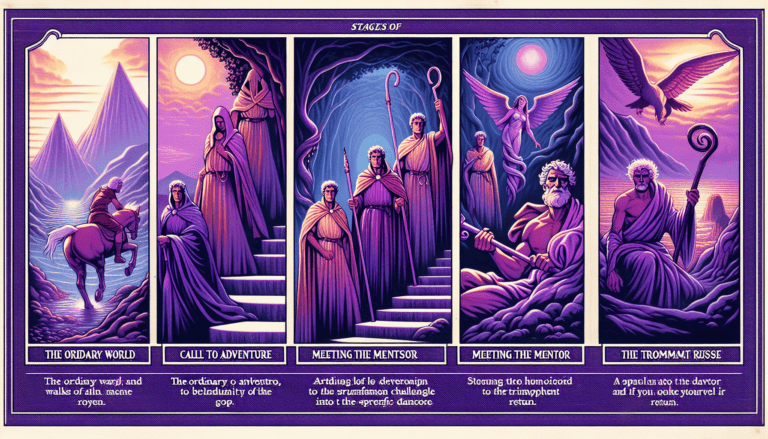Introduction
Have you ever heard that only 8% of people actually achieve their New Year’s resolutions? Crazy, right? But when you dig a bit deeper, it’s clear why: setting and achieving goals isn’t about dreaming big—it’s about being smart and strategic. It’s like sculpting; you start with a block of stone and gradually chip away until you’ve got a masterpiece. Today, I’m going to share some personal anecdotes, practical tips, and a bit of wisdom I’ve picked up over the years on mastering the art of setting and achieving goals. Trust me, once you get the hang of this, you’ll feel unstoppable!

The Foundation: Why Goals Matter
Picture this: I was in my early 20s, recently divorced, raising three young children, and had no idea where my life was heading. I was living pay check to pay check, barely making ends meet. I felt like I was drifting aimlessly. It wasn’t until a mentor told me, “Goals give you a compass in the sea of life,” that things clicked for me. Goals aren’t just about achieving something—they provide direction and purpose.
Here’s a mistake I made early on—I would set these vague goals like “be successful” or “get in shape” or “make more money.” Sound familiar? Big mistake. These kinds of goals are like using a foggy mirror to put on makeup; you simply can’t see what you’re doing. I learned that clear, specific goals give you that razor-sharp focus you need to make real progress.
And then there’s the emotional part. The highs and lows of working toward a goal can be intense. Once, I spent six months training for a marathon. In preparation for the marathon, I ran nearly 500 miles in training, overcoming countless physical, emotional, and mental setbacks. This journey of relentless persistence not only built my stamina but also strengthened my resilience and determination to achieve my goal. The euphoria I felt crossing that finish line wasn’t just about the race; it was the culmination of months of hard work, persistence, and overcoming doubt. Goals give us these incredible moments of triumph that make all the effort worthwhile.
So, set goals. They’re not just tasks to be checked off—they’re mini-life missions that make everything more meaningful.

Breaking it Down: The SMART Method
Now, let’s talk tactics. Ever heard of the SMART method? My first brush with this system was during a project management course I reluctantly attended. The acronym stands for Specific, Measurable, Achievable, Relevant, and Time-bound. Initially, I thought it was just corporate jargon. Boy, was I wrong.
I decided to try it out with a personal goal: losing 10 pounds in three months. I made it Specific (lose exactly 10 pounds), Measurable (track weight weekly), Achievable (with a realistic diet and exercise plan), Relevant (I wanted to improve my health), and Time-bound (three months). Guess what? It worked like a charm. Breaking down my goal into these components made the big picture less intimidating and far more manageable.
One practical tip: write your SMART goals down and stick them somewhere visible. I had mine on the pantry door, so every time I reached for a sweet treat, it served as a reminder of my commitment. Another thing—don’t be afraid to adjust your goals. Life happens. My exercise routine got derailed when I blew out my hamstring playing basketball with some friends from church, but by resetting my time frame, I still managed to hit that 10-pound mark.
Try the SMART method with one of your goals. Starting small can help you build momentum, and soon, you’ll be setting and achieving goals like a pro.
Overcoming Obstacles: Dealing with Setbacks
Okay, let’s get real. Life isn’t a straight path, and setbacks are part of the journey. When I first started my own business, I faced rejection after rejection. It was brutal. I questioned everything: Was I cut out for this? Was I chasing a pipe dream? But here’s the thing—every setback teaches you something valuable if you’re willing to learn.
One memorable screw-up was launching a knowledge product without proper market research and understanding of my target audience. Needless to say, it flopped. I was devastated, but that failure taught me the importance of knowing my audience inside out and falling in love with my ideal client. Instead of seeing setbacks as failures, view them as stepping stones to your next success. Each mistake offers clues and lessons that refine your strategy. Experiencing a product launch that didn’t go as planned isn’t a sign of defeat; it’s a valuable learning opportunity. As Tony Robbins wisely says, “There is no such thing as failure. There are only results.” Each setback provides critical insights that can guide you in refining your strategy and approach, ultimately bringing you closer to success.
Here’s a practical tip: when you hit a setback, take a “pause and reflect” period. I usually give myself 24 hours to sulk, complain, or even cry if needed. But after that, it’s back to problem-solving mode. This period allows you to process the emotions and then approach the problem with a clear mind.
Also, lean on your support system. Whether it’s friends, family, or a mentor, sharing your struggles can offer new perspectives and boost your morale. And always, always celebrate the small victories. These little wins are what keep you going.
The Power of Accountability: Share Your Goals
I was first introduced to the concept of an accountability partner at a transformative one-day workshop I attended, hosted by Jack Canfield, called Breakthrough to Success. During this workshop, each participant was tasked with creating a breakthrough goal. My goal was to start a personal development blog. We went through a detailed process of defining, writing down, and visualizing our goals.
The workshop also guided us through finding an accountability partner, someone we had never met or spoken to before. My assigned partner and I decided to keep in touch via Facebook Messenger. Every so often, she’d casually ask me to send her my most recent articles. Knowing she’d ask, kept me on my toes. Accountability is a game-changer. Sharing your goals with someone else gives you that extra layer of motivation.
Create an accountability group. Whether it’s friends with similar goals or online communities, the sense of shared purpose can push everyone to do better. I once joined a writing group where we shared our weekly progress. Let me tell you, the thought of showing up empty-handed kept me writing.
If you’re more of a solo player, consider journaling. Documenting your journey can be incredibly motivating. I often look back at old entries and feel inspired by how far I’ve come. Plus, writing down your goals and progress makes them more real and tangible.
Finally, look for a mentor or coach. Someone who’s been there, done that, and can offer guidance and constructive criticism. Their experience can help you navigate tricky waters and avoid common pitfalls.

Conclusion
Setting and achieving goals is an art, and like any art, it requires practice, patience, and persistence. Remember, it’s not just about the destination but the journey. Every step you take, every obstacle you overcome, brings you closer to your ultimate vision.
So personalize these tactics to fit your life. Goals are as unique as the people setting them. Keep tweaking, adjusting, and refining your approach. The key is to remain persistent and adaptable.
Now, get out there and start setting some epic goals! And hey, feel free to share your experiences or tips in the comments. Let’s learn from each other and keep pushing those boundaries!






4 Comments
Comments are closed.